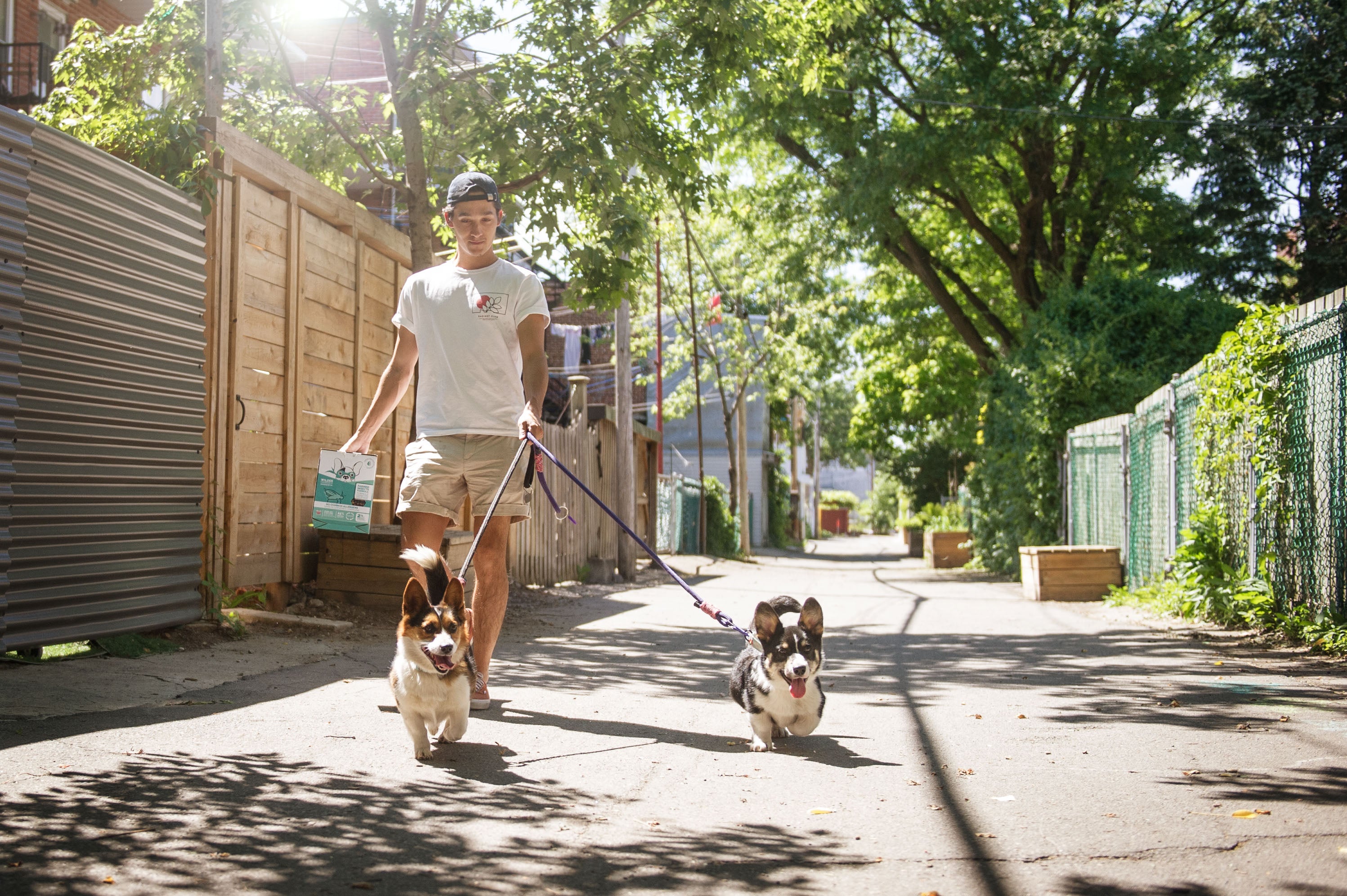Just like dogs sometimes must think that us hoo-mans are crazy, we too, have problems interpreting the body language of our beloved pooches. While we often make the common mistake that canines share similar emotions to us, nothing could be further from the truth.
Canines and humans are vastly different, with a myriad of different reactions to the same situations.
Dogs are incredibly expressive creatures, and their body language provides a wealth of information about their mood and intention. At the core of it all is their tail. A wagging tail doesn't always mean a happy dog!
Dog body language consists of a variety of distinct strategies for expressing emotions and intentions.
Because humans don't have tails, dog body language can be confusing at times. It's also in direct opposition to what the same signal indicates to a person, such as yawning or turning away. Let’s take a look at the common behaviors dogs have and what they mean.
- - Excited
The body language of an excited dog will be similar to that of a joyful and playful dog. Typically, the dog may pant, run around and bounce, and sometimes whine.
Their tail will be held high, and their tongue may stick out with wide-open eyes that just ooze intensity. Some dogs become hyperactive as a result of their excitement, jumping on humans, barking loudly, or getting the zoomies.
Excessively excited dogs may become fatigued or overstimulated, which is not necessarily a healthy thing.
Redirect an excited dog to a training cue, chew toy, or activity to calm them down like running outdoors.

- - Anxious or Nervous
A worried dog has a tucked tail and stands in a stiff posture. Yawning, licking of the lips, and displaying the whites of the eyes (whale eyes) are all signs of worry.
In addition, an anxious dog might exhibit behaviors like pacing or excessive panting. This is because they're trying to regulate their breathing and calm themselves down. You might also see them yawning a lot or licking their lips. If your dog starts to make direct eye contact with you, it's likely because they're seeking reassurance from you that everything is okay. They might also start to crouch down low to the ground or tuck their tail between their legs. This is a sign of submissiveness and fear.
If you notice any of these signs in your dog, it's important to react calmly. Speak in a soft, gentle voice and offer them a favorite toy or a sustainable dog treat. Avoid making any sudden movements as this could trigger even more of a reaction.
- - Confident
With its head and tail held high, eyes sparkling and ears perked up, a confident dog stands tall and straight. Although the mouth can be slightly open, the dog is relaxed and at ease. The tail might sway lightly, twist loosely, or hang loosely.
- - Playful
A playful dog is a happy dog! The eyes are bright, the tail normally wags quickly, and the ears are up and perky.
A playful dog may gleefully leap and run around, frequently doing a play bow, which consists of the front legs stretched forward, the head straight ahead, and the back end up in the air and perhaps wagging. This is, without a doubt, a solid invitation to “PLAY WITH ME!!!”

- - Aggressive or Violent
In a territorial fashion, an aggressive dog will plant all four feet firmly on the ground and have its ears pinned back, head raised above its shoulders and looking straight at you, and a narrowed but penetrating gaze.
An aggressive, angry dog will stand tall and have its tail up high while a fearful, defensive dog will be crouching and have its tail down low or between its legs.
Whether in fear or in aggression, a dog that is about to attack may bare teeth, snap his jaw, bark or growl aggressively. The hairs on the back of the neck may stand on end with hackles that are up. This isn’t a good posture! Back away slowly and get help immediately.
- - Dominant and Submissive
Dominance is a dynamic in a relationship between two canines, not an action. Although dogs in groups do not normally form tight hierarchies like other animals, there is occasionally a "pecking order." In groups of dogs, this dynamic often emerges naturally.
When a dog displays submissive behavior he is indicating that he is not a threat. It puts him in a position where he can assure others that it is harmless. Submissive conduct is something that a dog chooses to do, not something that is imposed upon it.
If a dog is making the other person or dog fall during the play or stands over them, it means he wants to show his dominance.
When a dog is demonstrating submissive behavior, it may lower its head and look away. Its tail is normally low or neutral, although it is not tucked. It may roll over onto its back, revealing its stomach. To further demonstrate passive intent, the dog may nuzzle or lick the other dog or person.
It will occasionally sniff the ground or otherwise shift its focus to show that it is not looking for trouble. A dog demonstrating submissive behavior will be mild and non-aggressive.
- - Happy
The body language of a happy dog is similar to those of a confident dog. The dog's tail might be held straight and also wag, and he may pant gently. The ears will be up, and the eyes shining bright. Happy dogs are the best!
- - Fearful
A terrified dog displays indications that are similar to those of an anxious dog, but with more pronounced signals. The dog is extremely tense and low to the ground, with flattened ears and narrowed averted eyes. The tail is typically tucked between the knees, and the body trembles frequently. The dog may pee or urinate.
A terrified dog may snarl, whimper, or even expose teeth. If cornered and threatened, this dog can swiftly become hostile. Instead of attempting to quiet the worried dog, simply remove yourself from the situation. Be calm and confident as the owner, but do not comfort or chastise your dog.
Final Thoughts
As much as we want our dogs to be like us, they are NOT! Canines are not nearly as complicated as humans. By understanding these simple signs, we can understand our beloved pooches better.




